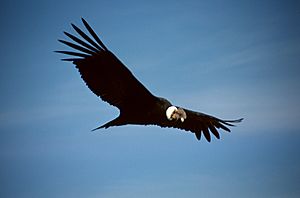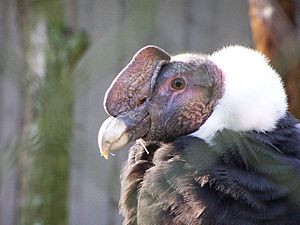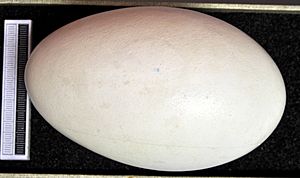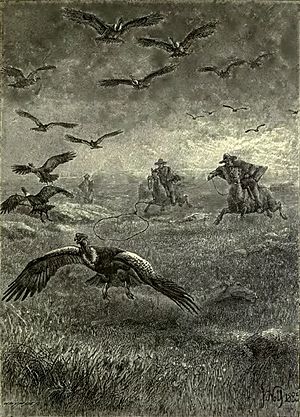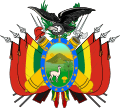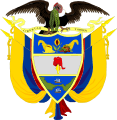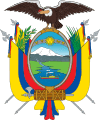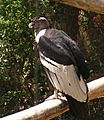Andean condor facts for kids
Quick facts for kids Andean condor |
|
|---|---|
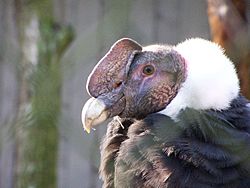 |
|
| Conservation status | |
| Scientific classification | |
| Kingdom: | |
| Class: | |
| Order: | |
| Family: | |
| Genus: |
Vultur
|
| Binomial name | |
| Vultur gryphus Linnaeus, 1758
|
|
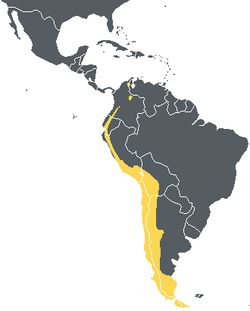 |
|
| Andean Condor distribution
Yellow – range/distribution |
|
The Andean Condor (Vultur gryphus) is a very large bird from South America. It belongs to the New World vulture family and is the only type of bird in its genus called Vultur. You can find it in the Andes mountains and along the Pacific coast of western South America. It is the biggest flying land bird in the Western Hemisphere.
This condor is a large black vulture with a fluffy white collar around its neck. Males also have big white patches on their wings. Its head and neck have almost no feathers and are a dull red color. This color can change when the bird feels different emotions. Male condors have a fleshy growth called a wattle on their neck and a large, dark red comb on top of their head. Unlike most birds of prey, the male Andean Condor is bigger than the female.
The condor mostly eats carrion, which means dead animals. It prefers large dead animals like deer or cattle. Andean Condors become adults and can have babies when they are about five or six years old. They usually rest at high places, between 3,000 and 5,000 meters (about 9,800 to 16,400 feet) high, often on rocky ledges that are hard to reach. They usually lay one or two eggs. The Andean Condor is one of the birds that lives the longest, sometimes up to 50 years!
The Andean Condor is a special national symbol for countries like Peru, Argentina, Bolivia, Chile, Colombia, and Ecuador. It is very important in the old stories and beliefs (folklore and mythology) of the Andean regions in South America. The IUCN says the Andean Condor is "Near Threatened". This means it could become endangered if we don't protect it. It is in danger because its home is shrinking and because of secondary poisoning from eating dead animals that hunters have killed with poison. People in several countries have started programs to breed condors in zoos to help save them.
Contents
What Does the Andean Condor Look Like?
The Andean Condor is a very big bird. Its wingspan, which is the distance from the tip of one wing to the tip of the other, can be between 2.8 and 3.2 meters (about 9 to 10.5 feet). It is usually heavier than the California Condor. Males can weigh from 11 to 15 kilograms (about 24 to 33 pounds), and females from 6 to 14 kilograms (about 13 to 31 pounds). From its beak to its tail, it can be from 102 to 135 centimeters (about 40 to 53 inches) long.
Adult condors are mostly black. They have a white fluffy collar around their neck. Males also have large white patches on their wings, which appear after their first molt. Their head and neck are red to reddish-black and have very few feathers. The condor keeps its head and neck very clean. Having no feathers there helps keep them clean and allows the sun's ultraviolet light to kill germs, especially at high altitudes. The top of its head is flat. Male condors have a dark red comb on their head and folds of skin on their neck, forming a wattle. The skin on their head and neck can change color when they feel different emotions, which helps them communicate with other condors. Young condors are grayish-brown with blackish skin on their head and neck, and a brown collar.
The middle toe of the condor's foot is very long, and the back toe is small. Their talons (claws) are quite straight and not very sharp. This means their feet are better for walking than for grabbing things, unlike many other birds of prey. Their beak is hooked and strong, perfect for tearing apart dead meat. Male condors have brown eyes, while females have deep red eyes. Their eyelids do not have eyelashes. It's interesting that female condors are smaller than males, which is the opposite for most birds of prey.
Where Do Andean Condors Live?
The Andean Condor lives in the Andes mountains of South America. Its home starts in the north in Venezuela and Colombia, where it is very rare. Then it goes south along the Andes through Ecuador, Peru, and Chile, and into Bolivia and western Argentina, all the way to Tierra del Fuego. A long time ago, in the early 1800s, Andean Condors lived all along the Andes mountains. But now, their living areas have become much smaller because of human activities.
They mostly live in open grasslands and high mountain areas, up to 5,000 meters (about 16,400 feet) high. They like open areas without many trees. This helps them spot dead animals from the sky. They can be found in places like the páramo (a type of high grassland) or rocky mountain regions. Sometimes, they fly down to lower areas in eastern Bolivia and southwestern Brazil. They also go to desert areas in Chile and Peru, and even to forests in Patagonia.
How Do Andean Condors Live?
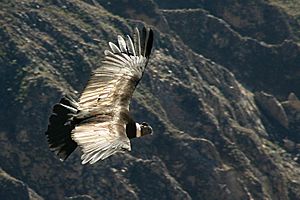
When the condor flies, it moves very gracefully, circling in the sky. It soars with its wings held flat, and the tips of its main feathers bent upwards. Condors don't have very large chest bones to attach big flight muscles, which shows they are built for soaring. They flap their wings when they take off from the ground. But once they are high enough, they hardly ever flap their wings. Instead, they use warm air currents called thermals to stay in the air. Charles Darwin once watched them for half an hour and didn't see them flap their wings even once! They like to rest in high places so they can easily launch into the air without much effort. You often see Andean Condors soaring near rock cliffs, using the warm air rising from the rocks to help them fly higher.
What Do They Eat?
The Andean Condor is a scavenger, which means it mainly eats carrion (dead animals). Wild condors travel over 200 kilometers (about 124 miles) a day looking for food. In inland areas, they prefer large dead animals like farm animals or wild deer. Near the coast, they mostly eat dead marine animals that wash up on the beach, like seals or whales. They might also raid the nests of smaller birds to eat their eggs. Coastal areas often have a steady supply of food. In places with lots of food, some condors only search a few kilometers along the beach.
They find dead animals by spotting them from high up or by following other scavengers, like crows or other vultures. They might follow smaller New World Vultures like the Turkey Vulture to carcasses. These smaller vultures can smell the gases from decaying animals. However, they can't easily tear through the tough skin of large animals. This is where the bigger condor helps. So, these birds often work together. Andean Condors don't eat every day. They might go a few days without food, then eat many pounds at once. Sometimes they eat so much they can't even fly! Since their feet are not made for grasping, they have to eat on the ground. Like other animals that eat carrion, condors are important for the ecosystem. They help clean up dead animals, which stops diseases from spreading.
How Do Andean Condors Have Babies?
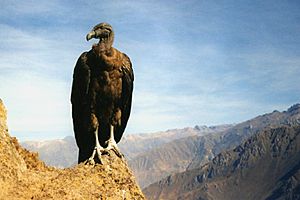
Andean Condors start having babies when they are about five or six years old. They can live for 50 years or more, and they stay with the same partner for their whole lives. When a male condor tries to attract a female, the skin on his neck changes from dull red to bright yellow and puffs up. He stretches his neck out, showing his puffed-up neck and chest patch, while making a hissing sound. Then he spreads his wings and stands tall, clicking his tongue. Other ways they show they like each other include hissing, clucking, hopping with partly spread wings, and dancing.
Andean Condors like to rest and have their babies at high places, between 3,000 and 5,000 meters (about 9,800 to 16,400 feet) high. Their nest is just a few sticks placed around the eggs on hard-to-reach rock ledges. But in coastal areas of Peru, where there are not many cliffs, some nests are simply small, shaded spots scraped out against rocks on slopes. They lay one or two bluish-white eggs every two years, usually in February or March. Each egg weighs about 280 grams (about 10 ounces) and is about 75 to 100 millimeters (about 3 to 4 inches) long. Both parents take turns sitting on the egg for 54 to 58 days until it hatches. If an egg or chick is lost, the parents will lay another egg to replace it. Scientists and breeders use this behavior to help more condors be born. They take the first egg to raise it by hand, which makes the parents lay a second egg. The parents are usually allowed to raise this second egg.
Young condors are covered with grayish fuzz until they are almost as big as their parents. They can fly after about six months. However, they stay with their parents, resting and hunting, until they are two years old. At that point, their parents usually have new babies, and the older young condors leave. Healthy adult condors don't have many natural enemies. But large birds of prey and animals like foxes might eat their eggs or young chicks. Condors in large groups have a clear social order, like a "pecking order." They figure this out through body language, playing, and making sounds.
The Condor in Culture
The Andean Condor is a national symbol for Argentina, Bolivia, Chile, Colombia, Ecuador, and Peru. It is the national bird of Bolivia, Chile, Colombia, and Ecuador. It plays a very important role in the old stories and beliefs (folklore and mythology) of the Andean regions in South America. People in the Andes have shown the condor in their art since about 2500 BCE. It is also part of their traditional religions. In Andean mythology, the Andean Condor was linked to the sun god and was believed to rule the upper world. Many Andean cultures see the condor as a symbol of power and good health. In the past, some people believed that parts of the condor's body had special powers, which sometimes led to condors being hunted.
The Andean Condor is a popular image on stamps in many countries. It has appeared on stamps for Argentina (1960), Bolivia (1985), Chile (2001), Colombia (1992), Ecuador (1958), Peru (1973), and Venezuela (2004). It has also been shown on coins and banknotes in Colombia and Chile. The condor is also featured on several coats of arms of Andean countries, representing the Andes mountains.
Images for kids
-
Andean condor, in Chilean national park Torres del Paine
-
Andean condor skeleton (Museum of Osteology)
-
Adult male at Taronga Zoo, Australia
-
Chancay textile with flying condors, 1200-1400 AD
See also
 In Spanish: Cóndor andino para niños
In Spanish: Cóndor andino para niños



